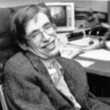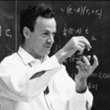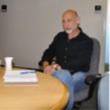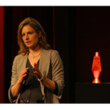The quantum story: a history in 40 moments
Description
More Details
Table of Contents
From the Book
Similar Titles From NoveList
Similar Authors From NoveList
Published Reviews
Choice Review
Science writer Baggott (The First War of Physics, CH, Apr'11; 48-4541; The Meaning of Quantum Theory, CH, Jan'93, 30-2734, etc.) traces the evolution of quantum mechanics from its inception to the latest developments in the field. In a very readable style, he outlines early quantum theory and its interpretation, the standard model of particle physics, and more recent developments in quantum cosmology. This material is not new--it is covered in one part or another in many other books. For example, see Manjit Kumar's Quantum (CH, Dec'10, 48-2141) for an excellent review of the interpretation of quantum theory. However, Baggott is successful in collecting the material and compiling it into a coherent whole. The author is particularly good at conveying the development of quantum theory as a process of discovery, and he provides some nice touches that bring out the human side of the people who have driven the quantum revolution. The reader will come away with an appreciation for the incredible subtlety of quantum theory and the knowledge that the quantum story has not yet run its course. Summing Up: Highly recommended. All readers. P. Oxley The College of the Holy Cross
Booklist Review
*Starred Review* Theoretical physics . . . , declared Robert Oppenheimer in 1934, is in a hell of a way. In this engrossing chronicle of the making of quantum physics, readers join scientific pioneers as they lurch from one infernal crisis to another. Laid out in 40 episodes clustered around seven themes, Baggott's compelling history begins with a reluctant Max Planck framing a radiation law ominously incompatible with traditional science. As that incompatibility shatters previously fundamental principles, titans such as Bohr, Heisenberg, Schrodinger, and Dirac struggle to frame a new paradigm. These audacious thinkers may occasionally baffle readers, but they will be in good company: Einstein rages against quantum probabilities that reduce God to a dice-throwing gambler, while Schrodinger puzzles over observer-dependent realities allowing an experimental cat to live and die simultaneously. As readers watch icons wrestle with devilish difficulties, the stereotype of the coldly cerebral scientist implodes: Bohr squares off with a hectoring Heisenberg, Dirac comforts a grieving Feynman, and Gell-Mann playfully invokes a Joycean jingle to resolve an enigma. Personalities again impinge on principles in the late chapters describing the twenty-first century's own hellish perplexity, as daring visionaries behind string theory clash with tough-minded skeptics demanding empirical verification. Hades has never been more enthralling!--Christensen, Bryce Copyright 2010 Booklist
Publisher's Weekly Review
"The reality of scientific endeavour is profoundly messy, often illogical, deeply emotional, and driven by the individual personalities involved...," writes Baggott, and his wonderful history of the scientists and ideas behind quantum mechanics offers ample entertaining proof. Science writer Baggott (A Beginner's Guide to Reality) tells the tumultuous story through 40 key events, beginning at the start of the 20th century, when Lord Kelvin, a British physicist, announced that scientists now knew everything about how the world worked. That triumphalism soon disappeared with Einstein's groundbreaking papers on relativity, which upended that understanding and defined the battleground that would occupy physics for the next century. Baggott hits all the usual high points, from Niels Bohr's work on atomic structure to the "uneasy alliances" and outright battles between proponents of different theories. Baggott's narrative stands out for its parallel exploration of the tenacious, all-too-human side of things: Schrodinger's unorthodox sex life and his loathing of academia; Richard Feynman's intuitive problem solving with all its "enthusiastic handwaving." The basic history behind the quantum revolution is well-known, but no one has ever told it in quite such a compellingly human and thematically seamless way. 16 pages of b&w illus. (Apr.) (c) Copyright PWxyz, LLC. All rights reserved.
Kirkus Book Review
A shimmering tour d'horizon of quantum theory from popular-science writer Baggott (Atomic: The First War of Physics and the Secret History of the Atom Bomb, 193949,2009, etc.).Quantum theorychallenging, disconcerting and heavy on mathis not going to be pinned down and dissected for lay readers without a lot of kicking and screaming. Baggott succeeds, however, imbuing the narrative with important context, his own communicable enthusiasm and the instances of dense theoretical exposition mediated by historical and biographical storytelling. His survey runs roughly chronologically, starting with Max Planck's contention that energy is composed of a definite number of equal finite packages, through Einstein, Bohr, Heisenberg, Dirac, Feynman, Hawking et al. the author then looks at the Standard Model and the more amorphous superstring theory. Confirmed prediction is paramount in quantum theory because it works on educated guesses and implication, with only indirect evidence for the matter at hand. Here again Baggott shines, filling in the background, sometimes purely personal and sometimes entirely academic. Those with a jones for physics will not be disappointed, but the author leads readers through the dense materialif not like a seeing-eye dog, then with encouragement to look beyond his pages.Quantum theory may deny us the possibility of properly comprehending physical reality, but Baggott's account is smart and consoling.]] Copyright Kirkus Reviews, used with permission.
Booklist Reviews
*Starred Review* "Theoretical physics . . . ," declared Robert Oppenheimer in 1934, "is in a hell of a way." In this engrossing chronicle of the making of quantum physics, readers join scientific pioneers as they lurch from one infernal crisis to another. Laid out in 40 episodes clustered around seven themes, Baggott's compelling history begins with a reluctant Max Planck framing a radiation law ominously incompatible with traditional science. As that incompatibility shatters previously fundamental principles, titans such as Bohr, Heisenberg, Schrödinger, and Dirac struggle to frame a new paradigm. These audacious thinkers may occasionally baffle readers, but they will be in good company: Einstein rages against quantum probabilities that reduce God to a dice-throwing gambler, while Schrödinger puzzles over observer-dependent realities allowing an experimental cat to live and die simultaneously. As readers watch icons wrestle with devilish difficulties, the stereotype of the coldly cerebral scientist implodes: Bohr squares off with a hectoring Heisenberg, Dirac comforts a grieving Feynman, and Gell-Mann playfully invokes a Joycean jingle to resolve an enigma. Personalities again impinge on principles in the late chapters describing the twenty-first century's own hellish perplexity, as daring visionaries behind string theory clash with tough-minded skeptics demanding empirical verification. Hades has never been more enthralling! Copyright 2011 Booklist Reviews.
Publishers Weekly Reviews
"The reality of scientific endeavour is profoundly messy, often illogical, deeply emotional, and driven by the individual personalities involved...," writes Baggott, and his wonderful history of the scientists and ideas behind quantum mechanics offers ample entertaining proof. Science writer Baggott (A Beginner's Guide to Reality) tells the tumultuous story through 40 key events, beginning at the start of the 20th century, when Lord Kelvin, a British physicist, announced that scientists now knew everything about how the world worked. That triumphalism soon disappeared with Einstein's groundbreaking papers on relativity, which upended that understanding and defined the battleground that would occupy physics for the next century. Baggott hits all the usual high points, from Niels Bohr's work on atomic structure to the "uneasy alliances" and outright battles between proponents of different theories. Baggott's narrative stands out for its parallel exploration of the tenacious, all-too-human side of things: Schrödinger's unorthodox sex life and his loathing of academia; Richard Feynman's intuitive problem solving with all its "enthusiastic handwaving." The basic history behind the quantum revolution is well-known, but no one has ever told it in quite such a compellingly human and thematically seamless way. 16 pages of b&w illus. (Apr.)
[Page ]. Copyright 2010 PWxyz LLC


































